Art, Ecofeminism, And Community On Display At A New Gallery In Bay Ridge

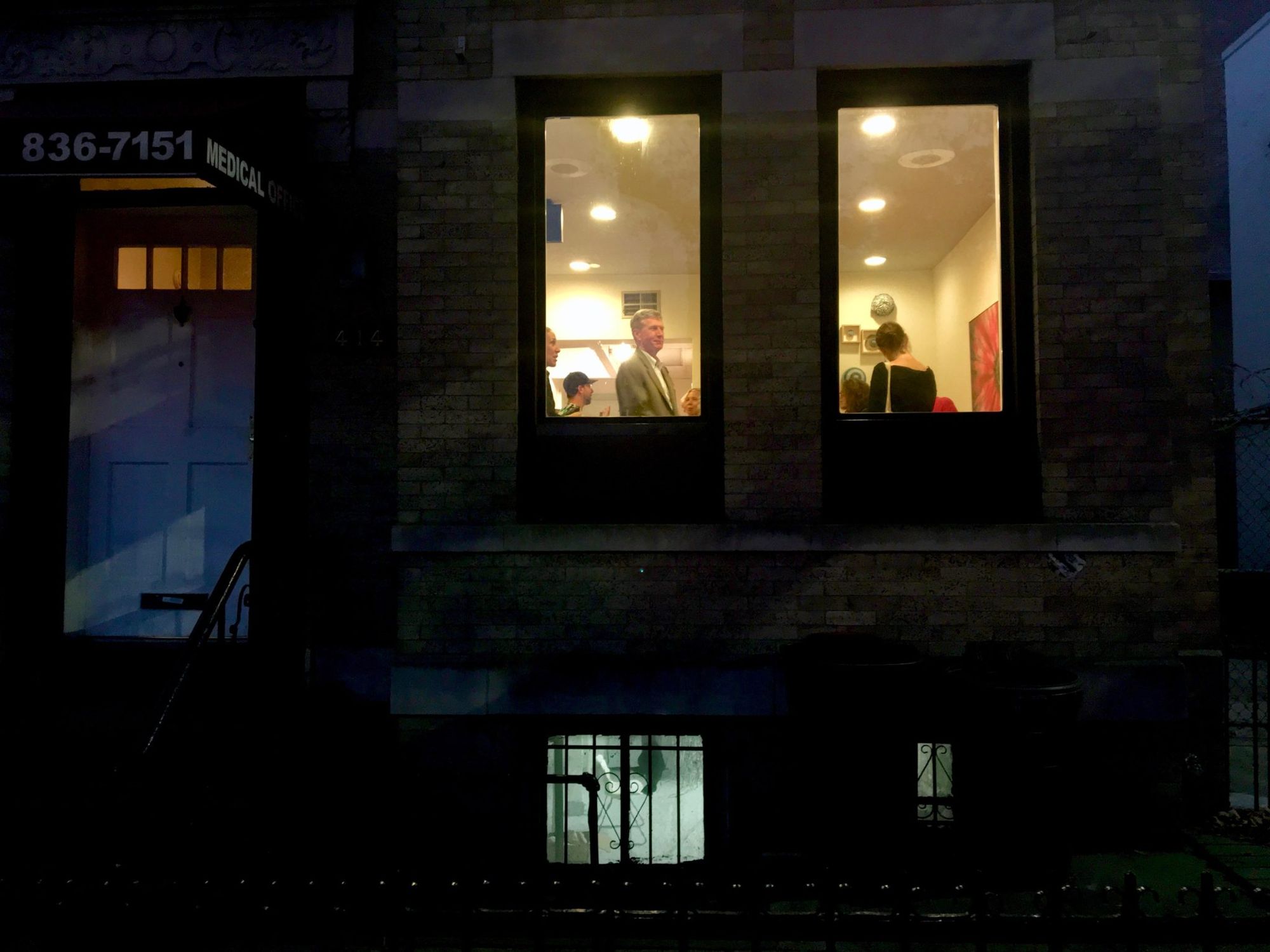
BAY RIDGE – You’d be forgiven for not recognizing Bay Ridge’s new Stand4 gallery right away. But for a small black sign posted to the fence, the outside looks like the neighborhood doctor’s office it once was. Bold letters across the burgundy awning spell out “Medical Office.” Down the block, neighbors work in their yards or take out the trash. Children run by on their way home from school.
For Jeannine Bardo, a lifelong resident of the neighborhood and Stand4’s founder, this is part of the gallery’s power.
“I love the idea that it’s directly in the center of Bay Ridge,” she said. “I want this space to be a place where people think about ideas and … talk about things, about how to make things better.”
Inside, unfinished wood floors and gleaming white walls house the gallery’s first exhibit, Reconceived Notions, which opened last Thursday and is on display through November 19. According to Mollie Flanagan, an arts administrator who co-curated the exhibit with Bardo, the exhibit engages with “ecofeminism.”
Reconceived Notions uses feminist principles to examine the ways in which humans interact with nature,” she wrote in the exhibition essay.
The six artists whose works are on display accomplish this in different ways.
For instance, Jaynie Crimmins transformed campaign mailings, which could not be recycled because they were printed with metallic ink, into three-dimensional wall hangings in bright blue and white. These sculptural works greet a visitor immediately upon entering, scaling a wall catty-corner to an arresting red painting by Katie Shima. An architect by training, Shima contributed two works to the exhibition, both playing with the relationship between built and natural landscapes.
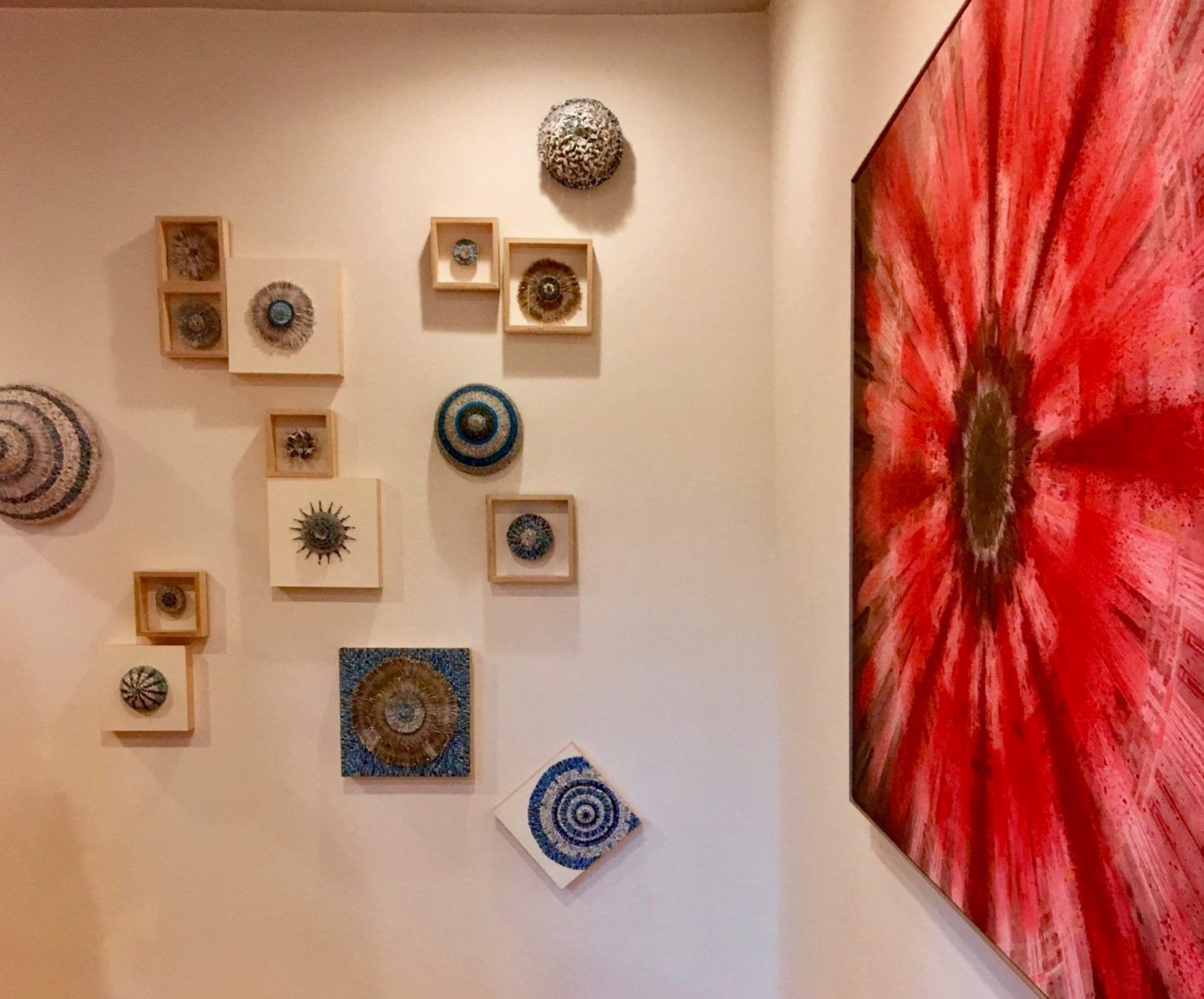
Brooklyn-based artist Katarina Jerinic incorporated a year-long performance piece into her visual work, referring back to the conceptual and environmental artist Agnes Denes. Tatiana Arocha, who was born in Bogotá and lives in Brooklyn, uses elements of graphic design and the ecology of Colombia to inform her prints and sculpture.
Magali Duzant, born and based in Queens, contributed a series of copper plates engraved with descriptions of the moon (contributed anonymously by fellow artists, on the night that Hurricane Sandy hit New York), the other a book project interspersing black-and-white images with words.
“I’m really interested in…how we make private things public, and how we take public experiences into our interior lives,” said Duzant.
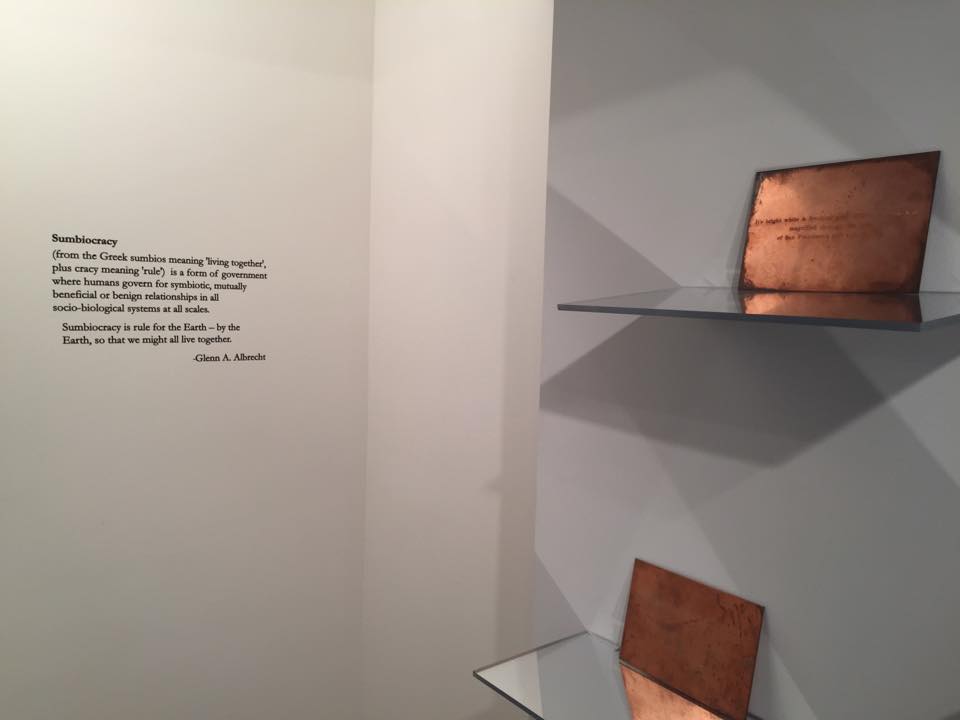
By the entry to the gallery hangs a key, with the words “Are we there yet?” scrawled adjacent. It’s the contribution of designer and “fashion activist” Céline Semaan, once a refugee from Lebanon who now runs Slow Factory, a socially-conscious manufacturer of clothing and accessories. The key is molded from the key to the home Semaan’s family left behind in Beirut.
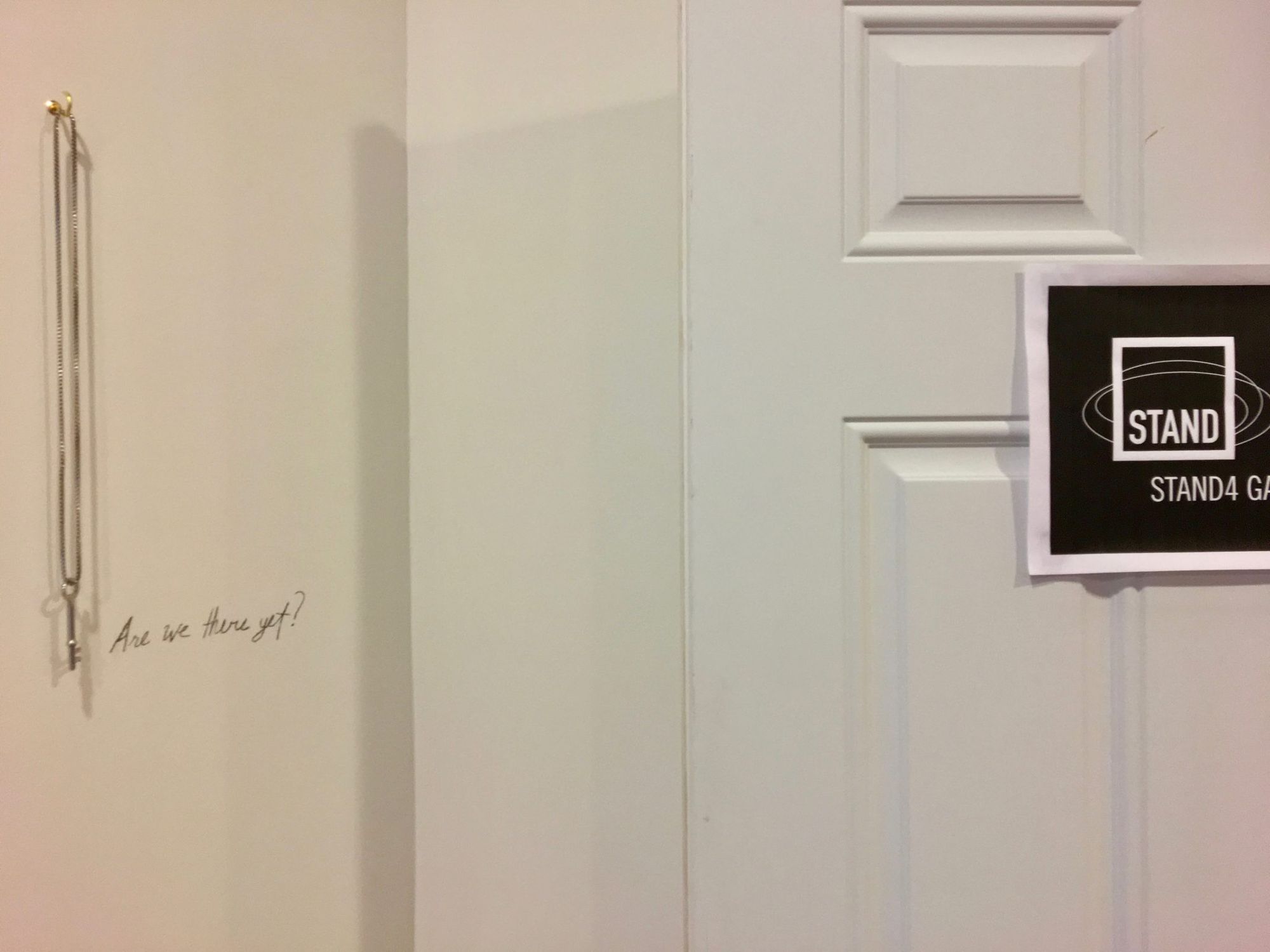
Bardo credits Glenn Albrecht, an Australian philosopher and academic, with inspiring some of her own thinking about art and the environment, especially his coined phrase solistalgia, which refers to bereavement for a natural environment.
“A lot of my work is about environmental loss,” said Bardo, “and my own connections with the natural world, the sadness I see about everything.” Albrecht’s definition of another coined phrase,sumbiocracy– “rule for the Earth – by the Earth, so that we might all live together” – is inscribed toward the back of the room, and Bardo plans on moderating a public discussion of his writings later this month.
Indeed, Stand4 is not merely a gallery but also a program space. Throughout the length of Reconceived Notions, Bardo and Flannagan will host artist talks with three of the featured artists and a reading group about ecofeminism.
Stand4 also functions as a studio for Bardo and three other working artists. John Avelluto, Danielle Bullock, and David Gitt all rent workspace within the building. Their residencies contribute to Bardo’s dream of creating a living, breathing home for art and ideas.
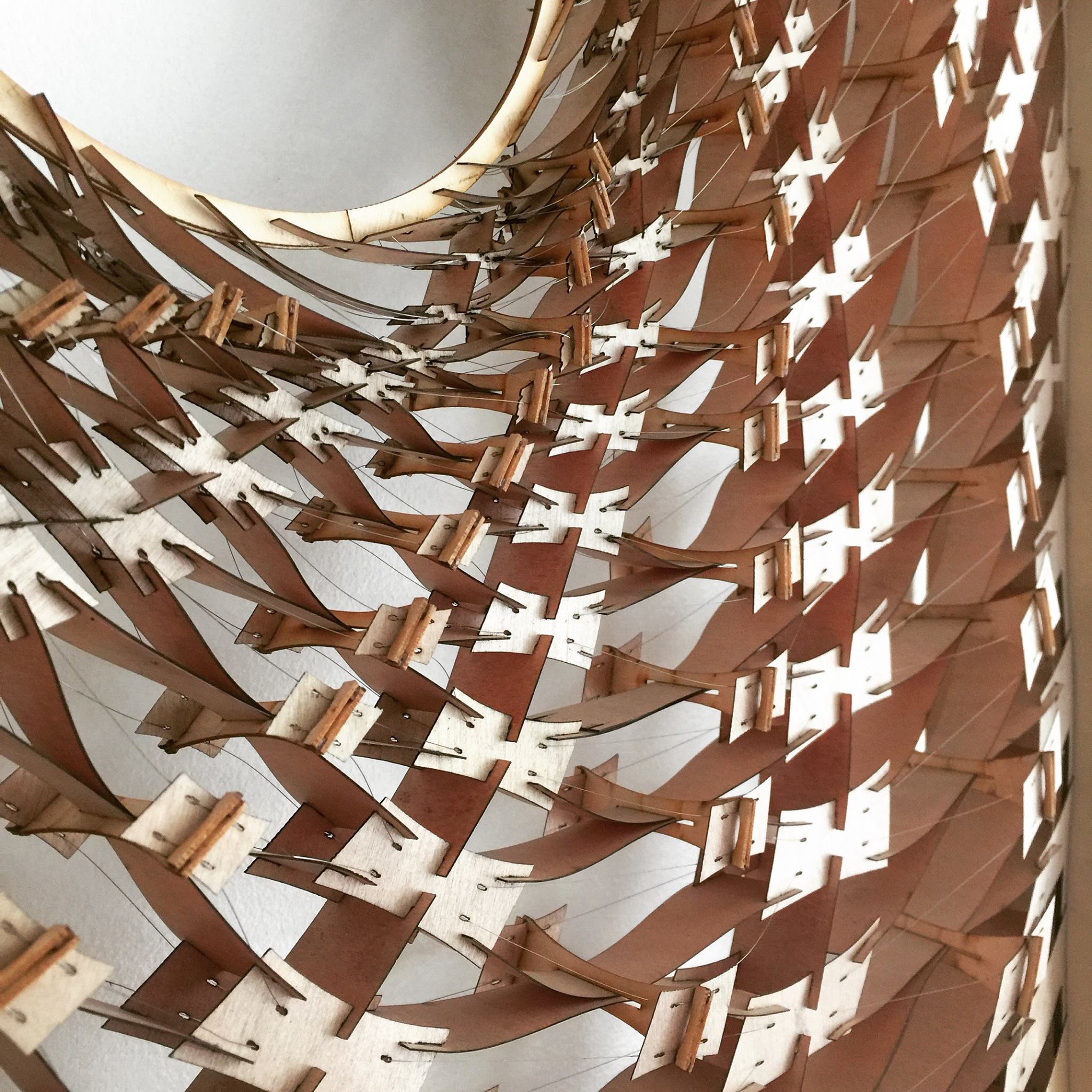
The origins of Stand4 can be found within Bardo’s larger project, Stand, which she began about four years ago. Stand functioned as a kind of wandering pop-up project that inhabited different local spaces in different ways at different times.
“The theme of the show would go around the space it [was in],” said Bardo. “It was in the space and then it was gone.” Her goal was to make art accessible to anyone in the neighborhood, and to financially support local artists.
Now Stand and its principles have a permanent home, rooted within the same community in which Bardo is rooted. She was born in Bay Ridge, in the same house that she raised her children in and still shares with her husband.
But she said that trajectory seems less possible these days, as the borough changes so quickly, squeezing people of limited means, including artists and immigrants, out of their old neighborhoods. Bardo said that this means it’s up to artists to fight for their communities.
“I think if you get people together you can accomplish a lot,” she said.
Reconceived Notions is on display at Stand4 (414 78th Street, Brooklyn) from October 12 – November 19. Hours are Friday 6-9 PM and Saturday/Sunday 12-5 PM. For more information visit Stand4.



